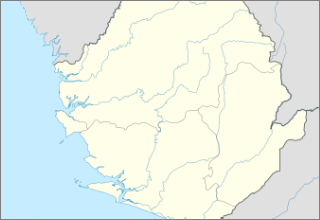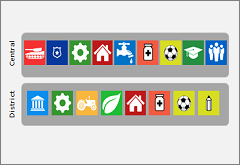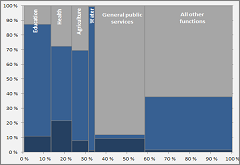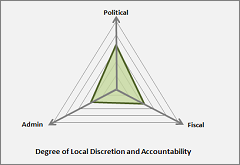Country Profile Background
Sierra Leone began its transition towards decentralized government in 2002, following the peace process that ended over a decade of civil war and strife. Although the country’s Constitution does not specifically provide for a decentralized system of local government, Parliament passed the Local Government Act in 2004 (re-)establishing an elected local government level. Since 2004, considerable progress has been made in devolving public service delivery functions from the central line ministries to the Local Councils. Despite considerable progress in the devolution of political powers and functional responsibilities, Local Councils remain seriously constrained by limited administrative devolution, as all ‘local’ public servants -such as teachers and health workers- in practice remain staff of their respective line ministries. In addition, limits of local own-source revenues as well as limits on the provision of intergovernmental fiscal transfers constrain the ability of Local Councils to improve the quality and access of local public services.
 Organizational/Governance Structure of the Public Sector
Organizational/Governance Structure of the Public Sector
Sierra Leone’s public sector hierarchy comprises governmental entities operating at the National, District, and Chiefdom levels. The Local Government Act (2004) established thirteen District Councils, five Town Councils, and the Freetown City Council. The 19 Local Councils are further subdivided into wards, the smallest level of local political organization. Sierra Leone’s 149 Chiefdoms overlap with these District Councils, and are governed by Paramount Chiefs and Chiefdom Councils drawn from eligible families. Some governance responsibilities, notably poll tax collection, are shared between councils and chiefdoms, although the precise limits of the authority of Chiefdoms are still being negotiated. with limited administrative and fiscal powers, DDCs (and perhaps to a somewhat lesser extent, VDCs) now effectively function as deconcentrated administrative entities rather than as truly devolved local governments.
Functional Responsibilities of the Local Public Sector
Sierra Leone’s Local Government Act (2004) provides for the devolution of all aspects of some 80 functions to Local Councils, with funding for these services to be secured through a combination of Local Council own-source revenues and formula-based grant allocations. The National Decentralization Policy (2010) notes that the assignment of functions and expenditure responsibilities or competencies to local councils should be aligned in accordance with the principle of subsidiarity. As of 2011, 47 functions had been partially devolved, including the responsibility for basic education, basic health services, agricultural extension services, water provision, solid waste management, fire protection, and other community-level services. Although the responsibility for these functions has formally been transferred to the Local Councils, the sectoral functionaries at the local level continue to be appointed and managed by the central government.
 Fiscal Profile of the Public Sector
Fiscal Profile of the Public Sector
Local Councils in Sierra Leone have direct authority over only 6.9% of public expenditures, consisting chiefly of operation and maintenance expenditures for local health, education, and agricultural activities (see graph – dark blue). Central line ministries, however, spend an additional 39.7% of public expenditures on localized public services, covering the vast majority of local wages and local development expenditures (in graph: light blue). Thus while local public sector expenditures account for 46.3% of total public spending in Sierra Leone, only a small share of these resources are currently managed by Local Councils.
Local Councils are highly dependent on intergovernmental fiscal transfers. Sectorally earmarked intergovernmental transfers account for 78% of local financial resources; no unconditional grants are provided. Local own-source revenues, including poll taxes, fees, and all other revenues account for only 1% of national revenue collections. Although the Local Government Act (2004) allows for local borrowing with central government approval, in practice, local governments are currently prevented from borrowing funds.
 Institutional Profile of the Local Public Sector
Institutional Profile of the Local Public Sector
Local Councils have a relatively high degree of autonomy in conducting their political and some fiscal affairs. The degree of administrative autonomy is distinctly split. While Local Councils have substantial administrative authority over procurement and over the management of junior council staff, they have little or no control over the number of establishments, hiring, firing, wage setting or payroll for senior council staff or for the staff of the various local sectoral departments which notionally fall under their responsibility. Extremely limited own-source revenues and the absence of untied grants further constrain the ability of Local Councils to conduct activities outside of those funded by administrative grants, sectoral grants and the limited cross-sectoral development resources available to them.
Country Profile Information
Complete LPS Country Profile: Sierra Leone (PDF)
Complete LPS Country Profile: Sierra Leone (XLS)





